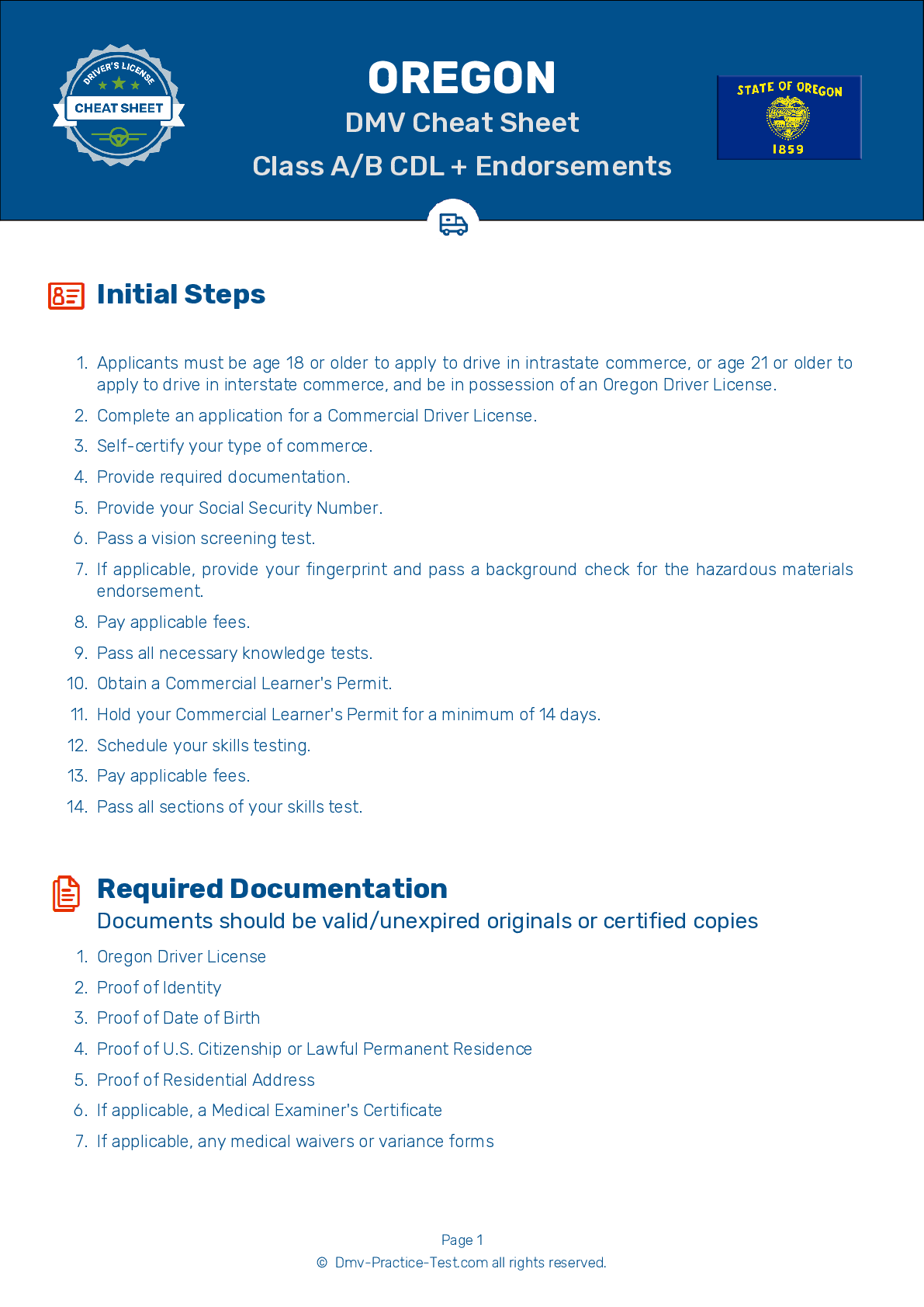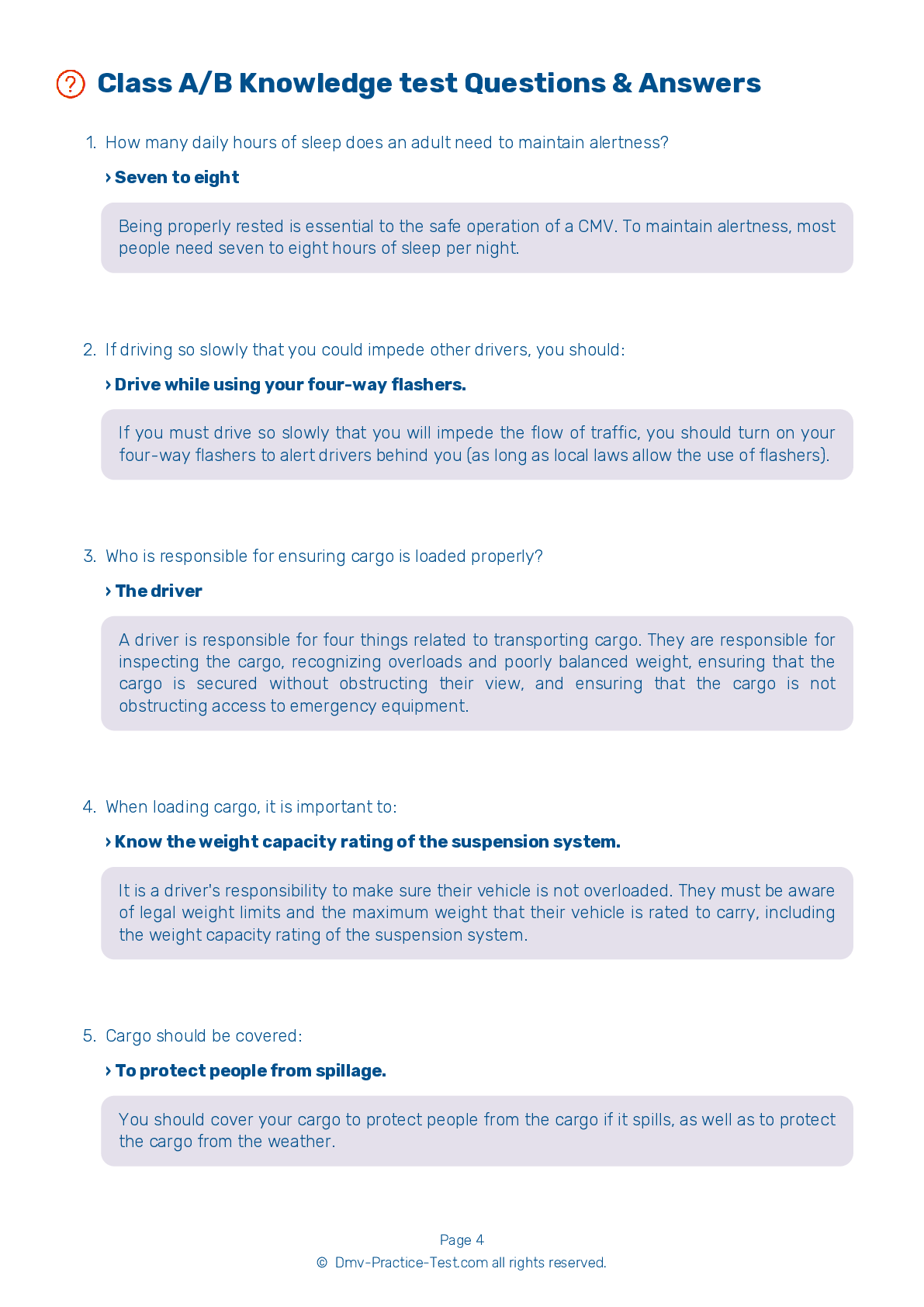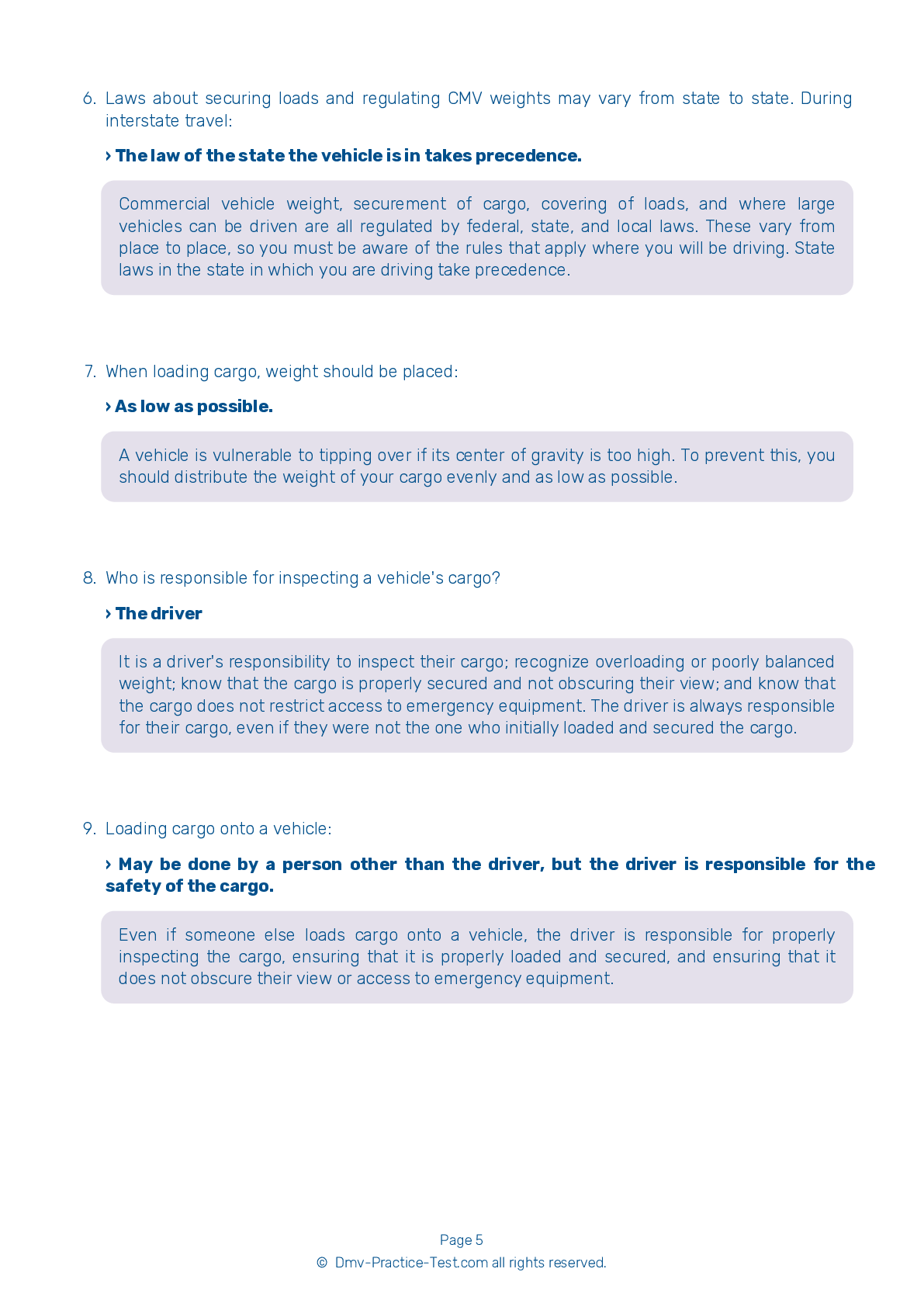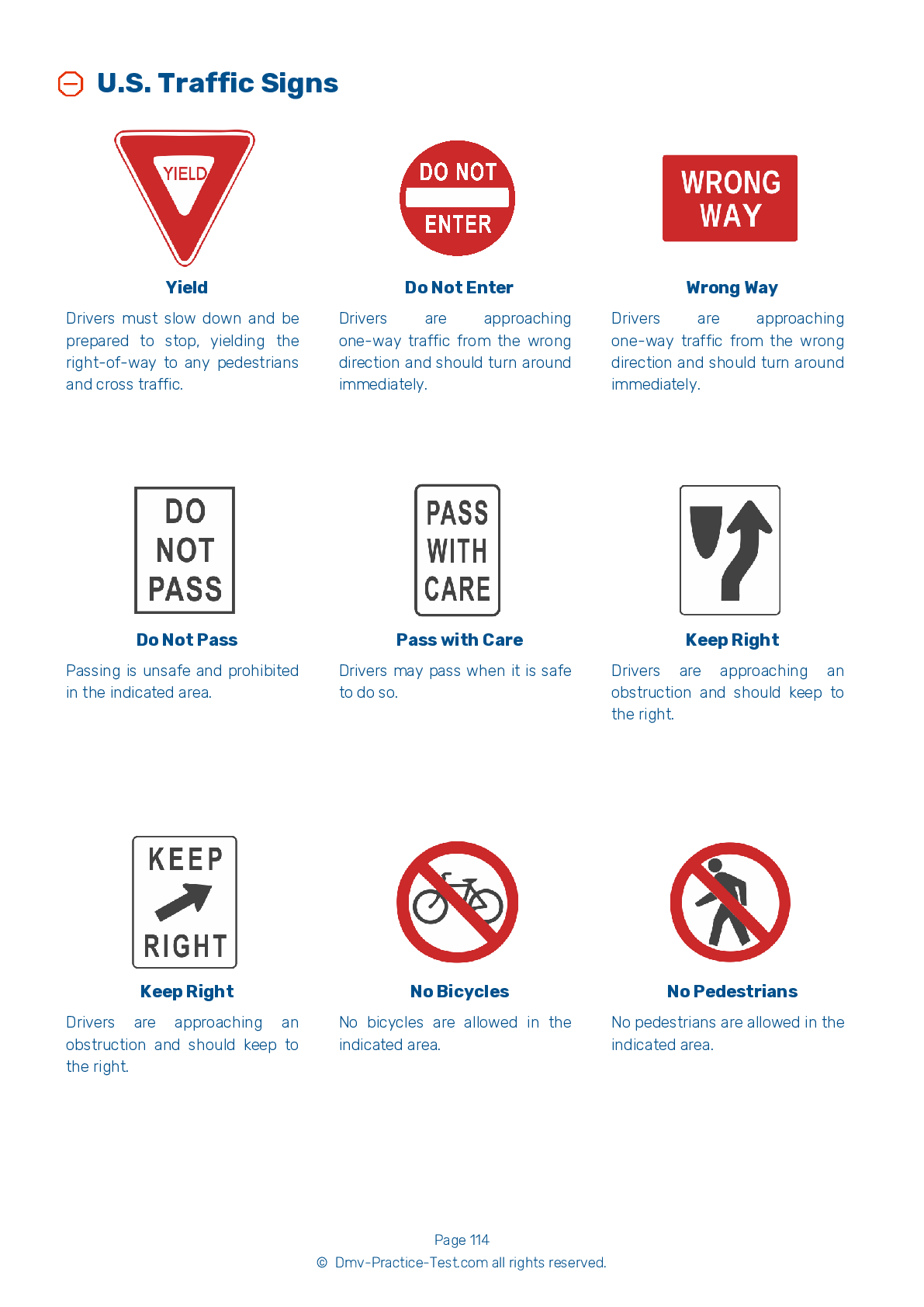Hazmat Test | Oregon 2026 #2 Page 3 of 5
On our website, we provide FREE practice - CDL hazmat test online! The official exam test consists of several obligatory parts, with all of them checking your knowledge of different blocks of road rules. If you need to obtain a OR CDL hazmat endorsement in 2026, practice as much as possible. Free sample tests published on our website will help you check and improve your knowledge and boost your grades. Please bear in mind that Oregon requirements for issuing a hazmat endorsement for CDL may vary from those established in other states.
13 . Emergency response information provided by the shipper must include:
At a minimum, emergency response information must include the basic descriptions and technical names of the materials being transported; immediate hazards to health; risks of fire or explosion; immediate precautions to be taken in the event of an accident or incident; immediate methods for handling fires; initial methods for handling spills or leaks in the absence of fires; and preliminary first aid measures.
14 . If cargo containing hazardous materials is leaking but the driver does not have access to a phone, they should:
If a cargo of hazardous materials begins to leak, do not move your vehicle any more than safety requires. If you continue to drive, an even larger area will become contaminated. Instead, you should park your vehicle, secure it, stay with the vehicle, and contact the proper emergency personnel. If you do not have access to a phone, you should send someone else to get help.
15 . On a shipping paper, the identification number, shipping name, and hazard class should:
On hazardous materials shipping papers, the identification number, shipping name, and hazard class must not be abbreviated, unless specifically authorized in the hazardous materials regulations.
16 . A clue that your shipment contains hazardous materials is that:
One clue that a shipment may contain hazardous materials is that the shipper is in a line of business that you would expect to involve hazardous materials. Examples of such businesses include paint dealers, chemical supply businesses, or pest control firms.
17 . An indicator that cargo contains hazardous materials is:
Packaging can be an indicator of whether or not materials are hazardous. Cylinders and drums are often used to hold and transport hazardous materials.
18 . In addition to reading the manual, the best way to learn about transporting hazardous materials is by:
While the manual contains all of the information needed to pass the written exam for a hazardous materials endorsement, it does not contain all of the information necessary to do the job safely. You can learn more by attending hazardous materials training courses.
See the exact questions that will be on the 2026 Oregon DMV exam.
99.2% of people who use the cheat sheet pass the FIRST TIME
Lillian MCcranie explains how our CDL study guide was helpful in passing the exam and recommends it to everyone.
Cameron tells us how he purchased the CDL exam, and found it to be a useful tool which helped him pass the exam and find a job.



